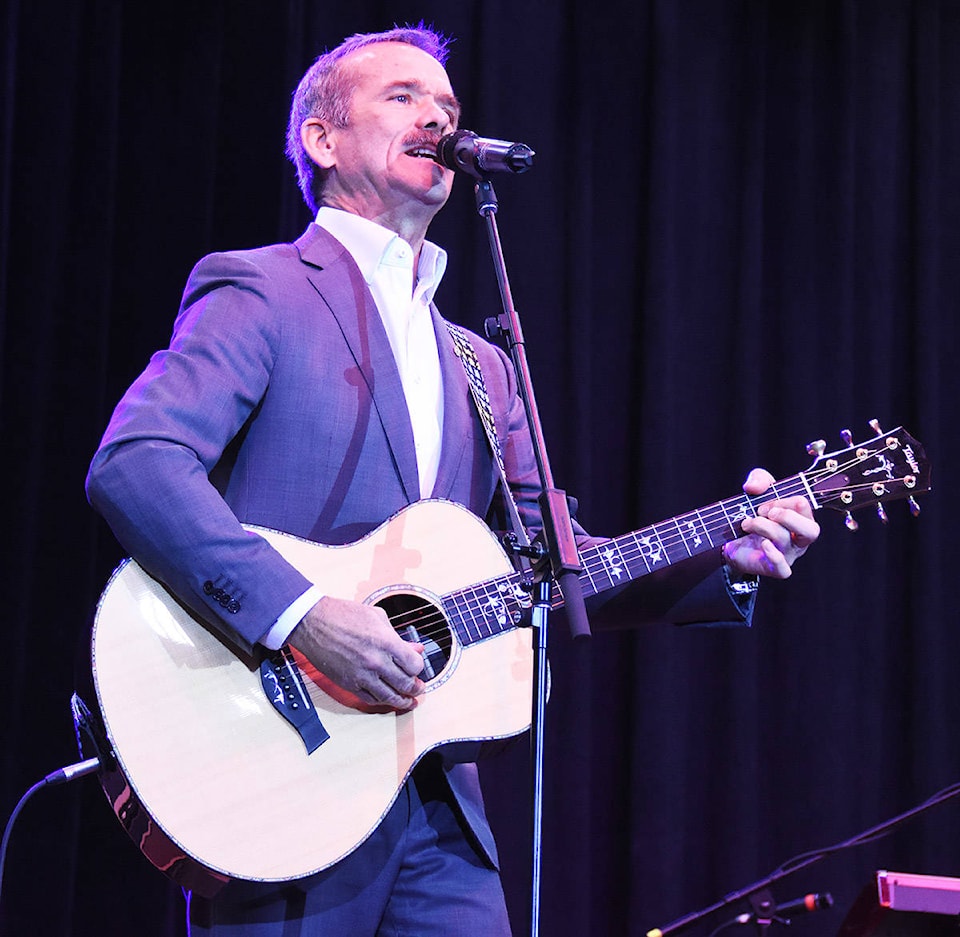When Chris Hadfield was young child, he would lie down in his bunk bed on his back, draw his knees up to his chest, and pretend to fly spaceships.
There was a sense of wonder for the young Hadfield, who was growing up just as space flight was transitioning from science fiction to a reality with the Apollo missions.
It was that sense of wonder and inspiration from Neil Armstrong and a love of comic books and Star Trek, that nurtured his dream of one day becoming an astronaut and going to outer space.
Hadfield, in Cranbrook last week to give a presentation to local students at Western Financial Place, is one of Canada’s most decorated astronauts who went to space in three separate missions and was commander of the International Space Station during his final trip.
Hadfield regaled the crowd with tales of his experiences growing up and the importance of making good choices that lead to reaching your goals.
A powerful message to deliver to young students.
As a young teenager who was born in Sarnia, Ontario, Hadfield joined Air Cadets and acquired his pilots license and was flying before he had his drivers license.
From there, he joined the Canadian military and learned and trained on fighter jet aircraft such as the CF-18.
After watching the first intake of Canadian astronaut recruited by NASA in 1983 — a class of six, including Marc Garneau and Roberta Bondar, from a pool of 4,000 applicants — Hadfield realized his goal of travelling to space was tangible and real.
A decade later, Hadfield was accepted into the next wave of Canadian astronaut recruitment with four others, including recently appointed Governor General Julie Payette, in 1992 out of a pool of 5,000 hopefuls.
Over a 20-year span, Hadfield was involved with NASA in various capacities, including his role as voice of mission control and as an astronaut, travelling to Mir, a Soviet era space lab, in 1995 and the ISS in 2001 and 2012.
While it’s easy to be overwhelmed by his resume and career accomplishments, it was his stories that captivated the audience.
Hadfield described what it was like to be sitting in the space shuttle as it was launching, demonstrating on stage by laying on his back with his feet in the air as he explained the incredible amount of thrust generated by the booster rockets.
“It’s stupid,” Hadfield told the crowd — his point being that astronauts are all but sitting on a controlled explosion that can’t be turned off once the rockets are fired up.
During his time as commander as the ISS, Hadfield said the station completed orbit of the entire planet once every 90 minutes. Over his three missions in space, the Canadian astronaut has been around the world over 2,600 times.
Preparation and training is the key to ensuring smooth operations on board, however, sometimes things can take an unexpected turn.
Hadfield recalled when he was working on an experiment only days before a new Dragon capsule was expected to dock with the station to take him home.
Pavel Vinogradov, a Russian astronaut, came barrelling through the station and found Hadfield, speaking in rapid-fire Russian about something he noticed outside the station.
Heading over to a window, both Hadfield and Vinogradov observed something kind of liquid matter leaking but couldn’t pinpoint the source.
What did he tell Mission Control over the radio?
“Houston, we have a problem,” Hadfield reported.
Of course.
Normally, a spacewalk takes a week to plan, but the ISS crew didn’t have a week.
Two astronauts suited up and ventured out to inspect the area in a five-hour spacewalk that involved replacing a pump unit which was leaking liquid ammonia — a coolant for the space station.
However, through all the stories and the photos and videos shared on the projector screen, the most important part of his presentation was serving as a living example that making good choices can help you reach your goals.
Students even got the chance to ask their own questions, and kids always ask the best ones that a journalist just doesn’t think about, or has the mind to ask.
“Have you ever been close to a star?” (No)
“Are you taller when you return from outer space?” (Yes, but only briefly)
“What happens to pee and, uh, other stuff?” (Urine is recycled into drinking water — to a chorus of ‘eewwwwss’ — while fecal matter is stored in a cargo module that, when full, is detached and sent into the atmosphere where it burns up).
Exploration, whether on Earth or in space, is a part of the human experience and technology is constantly evolving to help us understand our place in the cosmic ballet, which was one of the most poignant aspects of Hadfield’s presentaion.
Understanding the planet as a single, large interconnected ecosystem allows for a perspective that is hard to see unless you are observing the Earth from orbit.
Hadfield showed pictures of the barren dry landscapes of Australia, Mount Vesuvius in Italy (that famously exploded and buried Pompeii in ash) and even the Rocky Mountains and the Columbia Basin.
Just as Hadfield was captivated by the moon landing and the burgeoning space travel of the late 1960s, today’s young kids are beginning to be enthralled by the possibility of space travel to Mars, which is becoming more and more a reality.
And who knows, maybe a Cranbrook student will one day become an astronaut and lead a mission to Mars?
